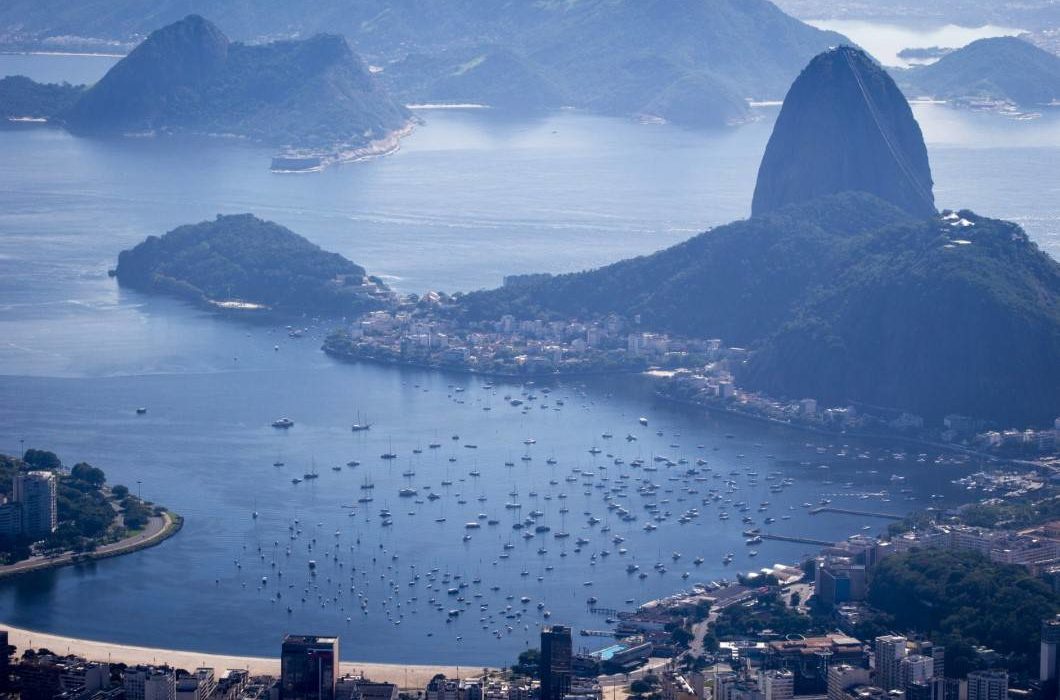
You might also like:
Brazil receives 6.5 million visitors a year, which is fewer than Osaka for instance in Japan. There are several reasons why there are not more foreign tourists in the country ranging from the lack of high-level standards and infrastructure to negative headlines in the international news.
Brazil currently attracts a little more than 6.5 million tourists a year. It may seem a great number, but this figure is low considering the country’s continental size and the variety of natural attractions and beauties.
During the last ten years, Brazil was not ranked among the 40 countries that welcome the highest number of foreign tourists, according to data provided by the World Tourism Organization (UNWTO). Countries such as South Africa (10.2 million), Australia (8.8 million) and Thailand (35.4 million) – whose distance to the US and Europe, the main inbound tourist sources, is basically the same as Brazil’s – receive more visitors.
While foreign tourists increased worldwide by 7% in 2017, compared to the previous year, the highest since the 2008 global financial crisis, tourism in Brazil increased by only 0.6% during the same period, according to the UNWTO.

According to experts, among the main reasons for such a slump, in a country with plenty of top destinations, are the negative headlines seen abroad; few international marketing efforts; the lack of high-level standards and infrastructure to welcome foreigners, and the high cost of travel.
“International tourism in Brazil has been increasing over the last ten years and it still lacks maturity. Rio de Janeiro has always been a very sought-after destination internationally,” André Coelho, the tourism expert from FGV Projetos, declares. “But, when we think of Brazil as a whole, its maturity lags behind smaller nations”.
The experts believe that Brazil’s reputation has been stained by recurring negative news. The news abroad is generally a mix of violent episodes, such as the federal intervention in Rio, crises, and disasters, such as the one in Brumadinho.
The Foreign Ministries from countries abroad usually give advice to travelers on their own websites. Germany, for instance, mentions that “the risk of being victim of assault or other violent crime is significantly higher in Brazil than in Western European countries” and that some large cities, such as Belém, Porto Alegre, Recife, Salvador, Fortaleza, São Luiz, Maceió, Rio de Janeiro, and São Paulo “have high crime rates” and that “it is important to be cautious, even in parts of the country and cities deemed safe”.
Another factor that is hampering the increase in foreign tourists in the country is the travel cost. The Germans, for instance, pay about 600 euros to fly during the European summer to Bangkok, in an 11-hour flight. For São Paulo during the same period, the 12-hour journey often costs 1000 euros. In addition to the flight tickets, Thailand’s hotel prices, attraction fees, transport, and food costs are much lower than those in Brazil.
“The travel cost interferes with the tourist decision. For a German or a Western European, for instance, it is cheaper to travel and stay in Thailand than in Brazil,” André Coelho said. “There are also more flights from Europe to that Asian country since Bangkok is a hub for passengers traveling to other destinations in Southeast Asia and Australia, so flights are cheaper”.
The expert also affirms that the 2014 World Cup and the 2016 Olympic Games in Rio de Janeiro were not enough to boost tourism in Brazil. “The World Cup, for having had a national reach with its twelve stadiums and a higher number of people watching the matches around the globe, secured good visibility to Brazil,” Coelho explains. “The economic crisis not only hit Rio de Janeiro but also the entire country, one year before the start of the Olympic Games, compromising the success of Rio’s mega-event”.

The Ministry of Tourism acknowledges that the arrival of foreign tourists does not match the country’s potential and that the department has been trying to connect Brazil with the world and increase its international promotion. This would include a visa waiver program – without reciprocity – for four pivotal countries: USA, Canada, Japan and Australia. This measure is expected to be launched later this year.
Among the goals of the federal government for the 2019-2022 period is a spike in foreign tourists: from the estimated 6.8 million in 2018 to 12 million visitors from abroad in 2022.
Nevertheless, while the country intends to almost double the number of international arrivals over a four-year period, Embratur – since 2003 accountable for Brazil’s promotion in the international market – ended, at the end of 2018, after five years, the agreement with companies that promoted the country in 11 strategic nations: USA, France, Argentina, Peru, Italy, Germany, Spain, Portugal, United Kingdom, Russia and Japan.
However, the federal government does not consider this to be negative for the sector since, starting this year, the relationship with professionals in the international tourism sector will be directly led by Embratur’s technical staff, in an articulated effort with Itamaraty. “A team of providers will strengthen relations with the more than 23,000 international partners already mapped out, which include tourism operators, airlines, travel agencies, and others,” the government stated.
In the last five years, Brazil’s budget for tourism promotion abroad dropped by more than half. According to data provided by the Ministry of Tourism, the country invested 117.3 million reais in 2014 in marketing efforts. In 2018, the amount was 51.3 million reais.
The Ministry of Tourism believes that the approval of the project, which foresees the creation of the Brazilian Tourism Promotion Agency (the new Embratur), to be voted in Congress, will give more flexibility to the municipality management while strengthening international promotion through partnerships with private entities to attract tourists, events and investments.
Source: tourism-review.com



